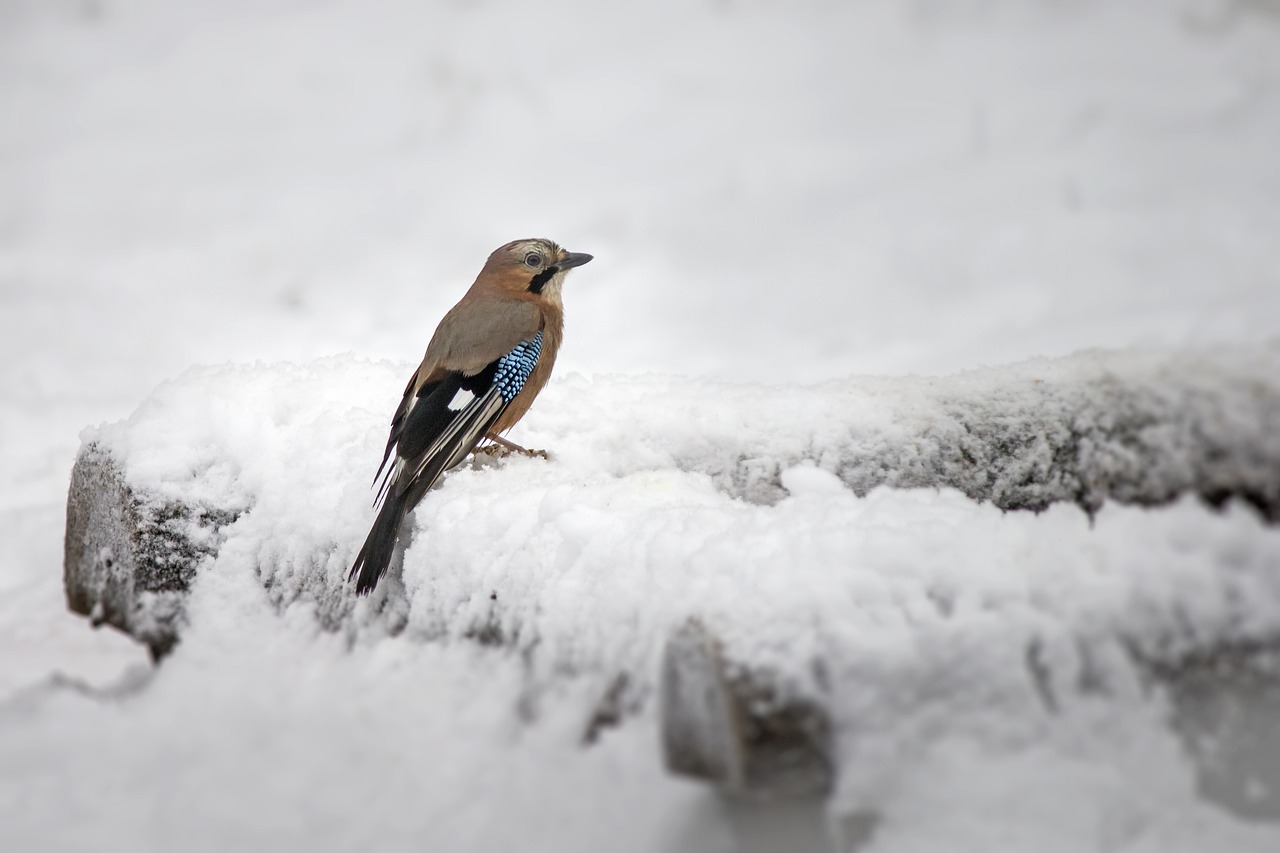The Eurasian Jay (Garrulus glandarius) is a striking and intelligent bird belonging to the crow family, Corvidae. Known for its vibrant plumage and resourceful behavior, the Eurasian Jay is widespread across its range. Here’s an overview of this remarkable bird:
Appearance
Adult Jay:
- Size: Medium-sized bird, approximately 34-35 centimeters (13-14 inches) in length with a wingspan of 52-58 centimeters (20-23 inches).
- Coloration: Notable for its pinkish-brown body, white throat, and black mustache-like streaks.
- Wings: The wings have striking blue and black bars on the primary coverts, which are especially visible in flight.
- Tail: The tail is black, and there is a white rump visible during flight.
- Eyes: Pale blue eyes, which contrast with their dark face markings.
Habitat
- Preferred Habitats: Eurasian Jays are commonly found in mixed woodlands, deciduous forests, and coniferous forests. They also adapt well to parks and suburban areas.
- Geographic Range: They are widely distributed across Europe, North Africa, and parts of Asia, including the Indian subcontinent.
Behavior
- Feeding: Omnivorous, their diet includes acorns, seeds, nuts, berries, insects, small mammals, and occasionally small birds and eggs. They are known for caching acorns, which helps in forest regeneration.
- Vocalization: Known for their loud and harsh calls, they can also mimic other birds and even human-made sounds.
- Breeding: They typically nest in trees or large shrubs, building a nest from twigs, moss, and other plant materials. Both parents share the responsibilities of feeding and raising the young.
Life Cycle
Nesting:
- Season: Breeding season usually runs from April to July.
- Clutch Size: Females lay 3-6 eggs per clutch.
- Incubation: Eggs are incubated for about 16-19 days, primarily by the female.
Chicks:
- Development: The chicks are altricial (born blind and helpless) and are cared for by both parents. They fledge after about 19-23 days but remain dependent on their parents for a while longer.
Identification Tips
- Flight Pattern: In flight, their white rump and blue wing patches are distinctive.
- Calls: Their characteristic harsh, screeching calls are often heard before the bird is seen.
Ecological Role
- Seed Dispersal: By burying acorns and other seeds, Eurasian Jays play a significant role in forest regeneration.
- Predator-Prey Dynamics: They are both predators and prey. They feed on various insects and small animals while being preyed upon by larger birds of prey.
Conservation Status
- Population: The Eurasian Jay has a stable and widespread population and is not considered threatened.
- Threats: Habitat loss and fragmentation can impact local populations, but overall, they adapt well to human-altered landscapes.
- Conservation Efforts: General conservation of forested areas benefits this species.
Human Interaction
- Urban Adaptation: Eurasian Jays have adapted to suburban environments and are often seen in gardens and parks.
- Positive Impact: Their role in seed dispersal aids in forest growth and maintenance.
Summary
The Eurasian Jay (Garrulus glandarius) is a distinctive and adaptable bird known for its striking plumage and intelligent behavior. Found across a wide range in Europe, North Africa, and parts of Asia, this species thrives in various habitats, including forests and urban areas. With a diverse diet and significant role in seed dispersal, Eurasian Jays contribute to forest ecosystems’ health and regeneration. Recognizing their vocalizations and unique flight patterns can help in identifying these birds in the wild. Despite some threats from habitat loss, their stable population reflects their adaptability and resilience.
Views: 16
Subscribe to the newsletter:
